Summary: strong price and breadth suggest the uptrend from the March low has further to go. A dip early in the week is a high probability buy set up. But gains from here are likely to be short lived; nibble traders may want to sell into strong gains on the expectation of weakness over the next month.
* * *
At the end of last week, major support levels for US equity indices had held, despite three weeks of selling. Several indicators of breadth had bottomed. March OpX and the FOMC were expected to be catalysts, and they were (post). For the week, SPX gained 2.7%, RUT gained 2.8% and NDX led, gaining 3.3%.
Foreign equities were equally strong. Europe and Japan gained nearly 2% and emerging markets gained a massive 4.7%.
It was an important week of gains. RUT and NDX both closed at new bull market highs (weekly closing basis). SPX's gain eclipsed the losses from the two prior weeks and was within 1 point of eclipsing the prior three weeks of loses. These are not signs of weakness.
Only RUT is visibly overbought on a daily basis. It has been up 7 of the last 8 days and closed Friday above its upper Bollinger®. Note its RSI (top panel). A good test will be this coming week: a strong market will consolidate, giving up little and remaining overbought. The early March highs (1240 area) are first support. The trend is up.
NDX has been up 6 of the last 7 days, closing Friday right at its early March high. Volume on Friday was the largest in 3 months. RSI is not overbought. Again, a good test will be its ability to give up little before moving above the prior high (4480 area). Imagine a "handle" being created on the existing "cup" formation next week. The rising 13-ema (4400 area) is first support.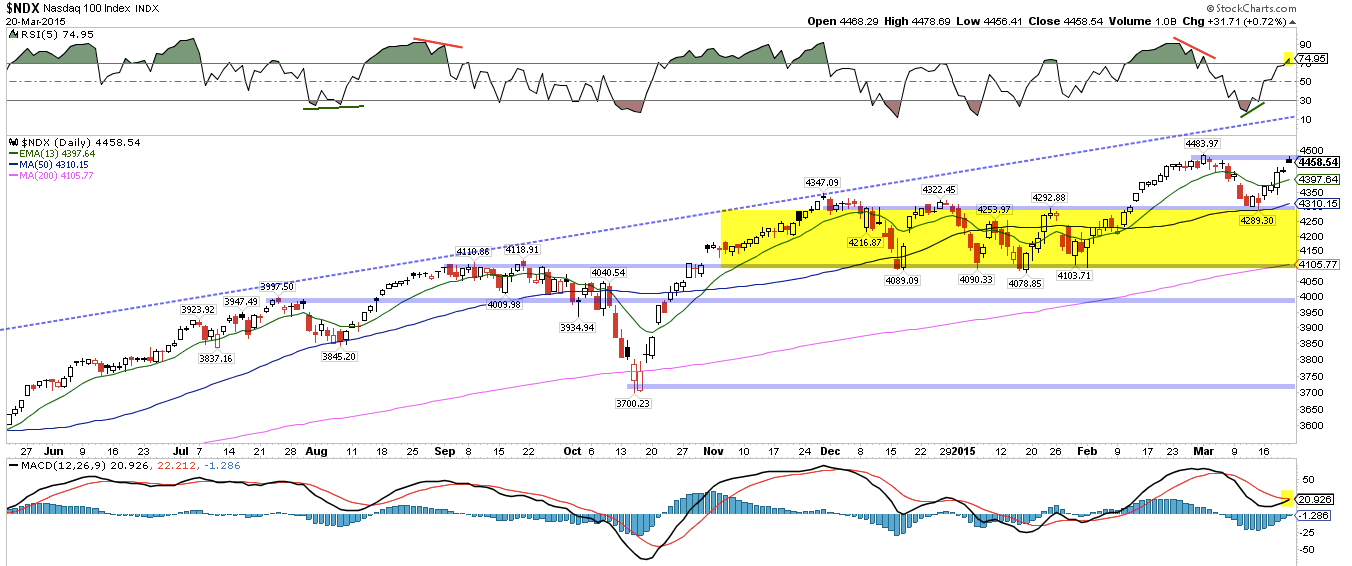
The SPDR S&P 500 ETF (ARCA:SPY) has alternated up and down every day for 8 days in a row. While that sounds weak, the up days have been very strong: three of the four have been gains of more than 1.1% and the fourth gained 0.9%.
Strong gains on high volume are not signs of weakness. In the past when SPY has gained more than 2.5% in a week (lower panel), the trend has continued higher at least one more week. Note that the weekly RSI is still moving up but is not overbought (upper panel).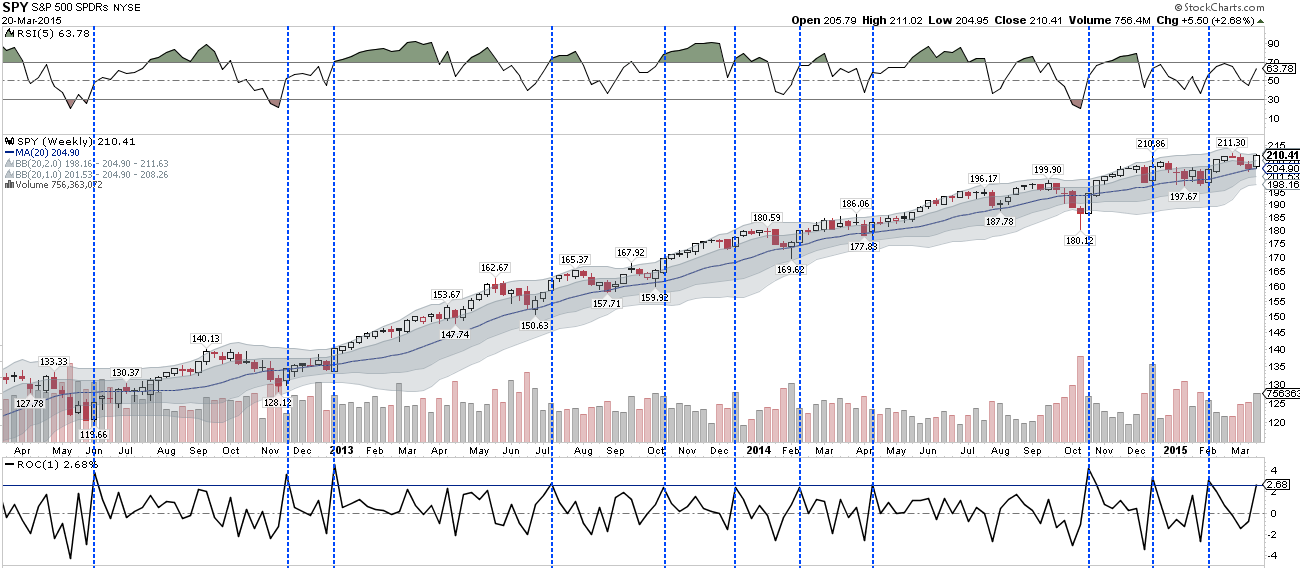
Recall also that SPY had gained 3 weeks in a row in February. In the past, that has usually led to at least one more week of gains. Having given up half those gains in the interim, the moment is now here to make that higher high. The few times similar to now also moved higher (yellow shading).
The short term set up in SPY is similar to NDX: it would not be surprising to see weakness to start the coming week. SPY stalled at the top of a channel as well as the prior high. The lower channel is following the rising 5-dma (green line); note the gap at 209.5, which was also the low in late February (purple line). That looks like a possible target on weakness. 209 is also next week's pivot.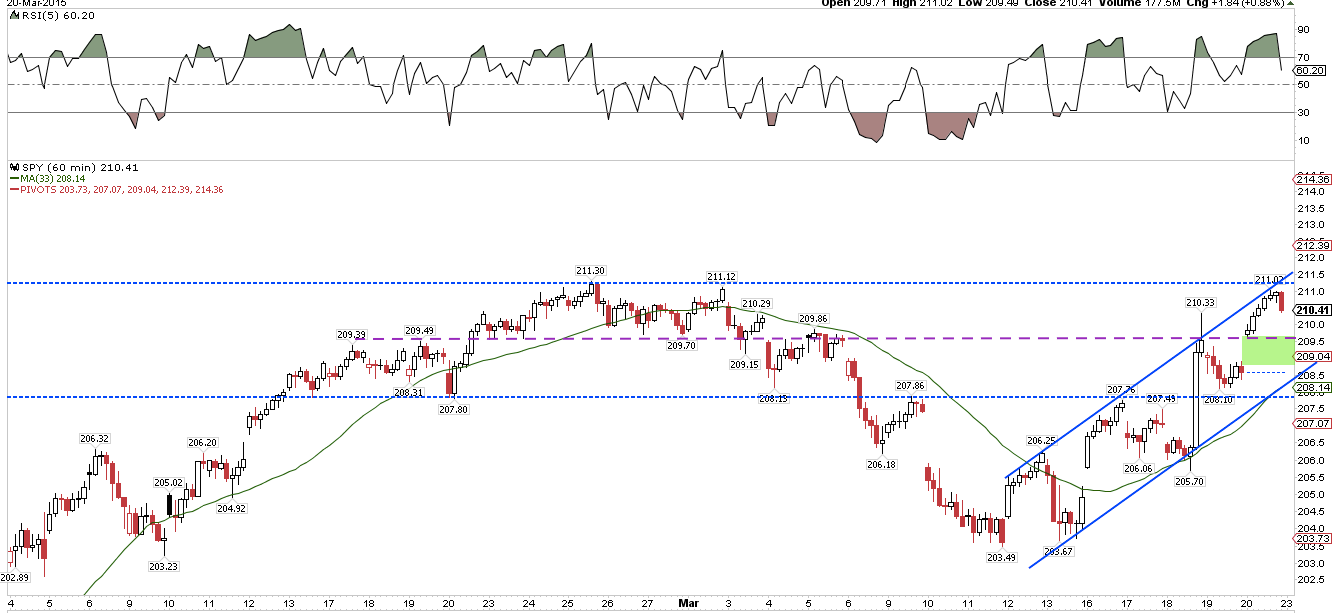
Holding 208 is now key: it has just tested the prior trading range from November-February (yellow shading). Below 208 will look like a second failed breakout. That is also the location for the rising 13-ema. A second inflection down in the 13-ema, now that the March high has been re-tested, will be a strong warning.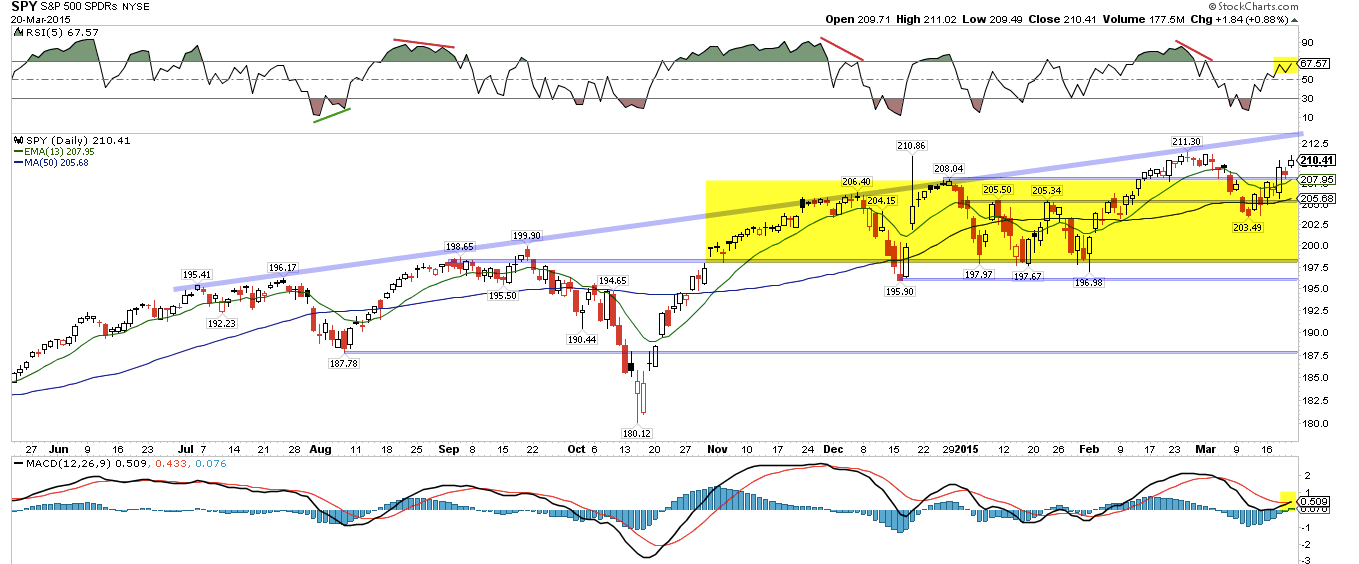
In sum, the indices made higher lows and, in some cases, are also making higher highs. This is the definition of an uptrend. On a daily or weekly basis, the indices are not overbought. A true test of market character has arrived: the markets must become and remain overbought to show that there is upside ahead. A failure now will instead show that a ranged market environment will continue.
Longer term breadth supports the uptrend: it is not yet overbought but it will be when more than 80% of stocks in the SPX are above their 20 or 50-ema. Now, both of these are still in 70%s.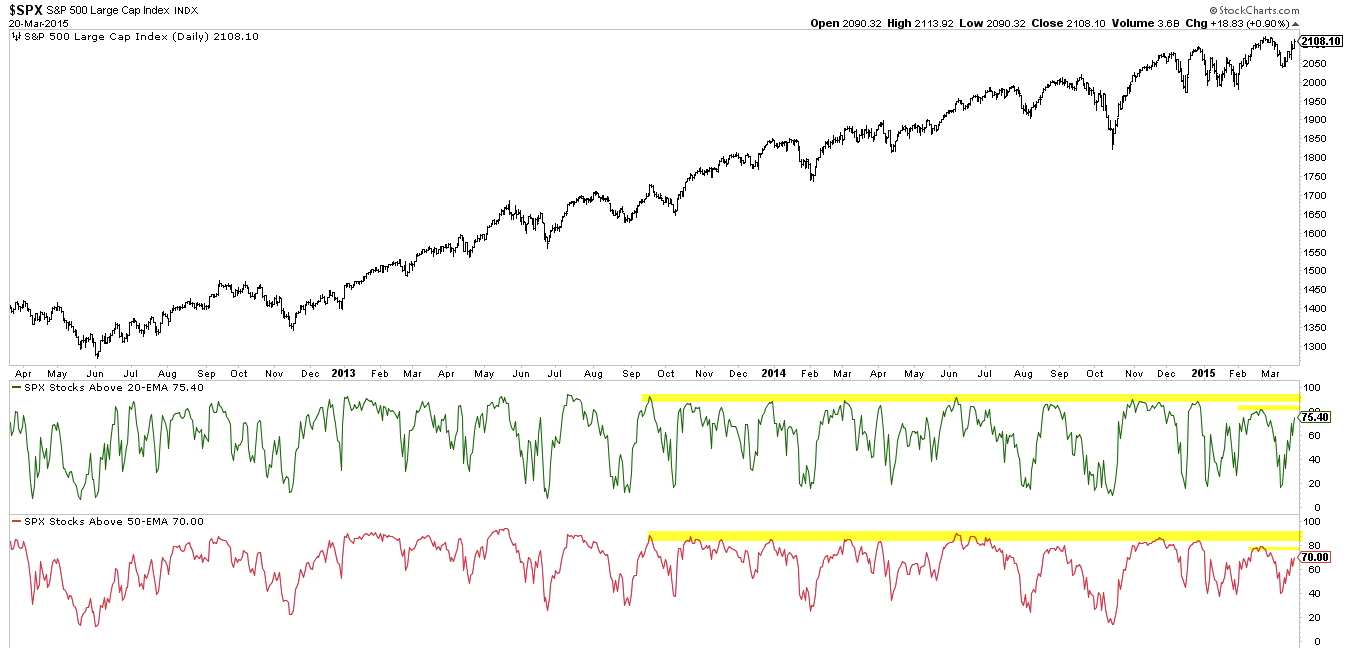
Likewise, 86% of stocks in the SPX are above their 10-dma. In the past 3 years, SPX has closed higher by an average of 1.5% within 10 days in 95% of instances (n=20; middle column). SPX ended higher after 10 days in 80% of instances (right column). In other words, the strength in breadth strongly suggests further upside over the next 1-2 weeks.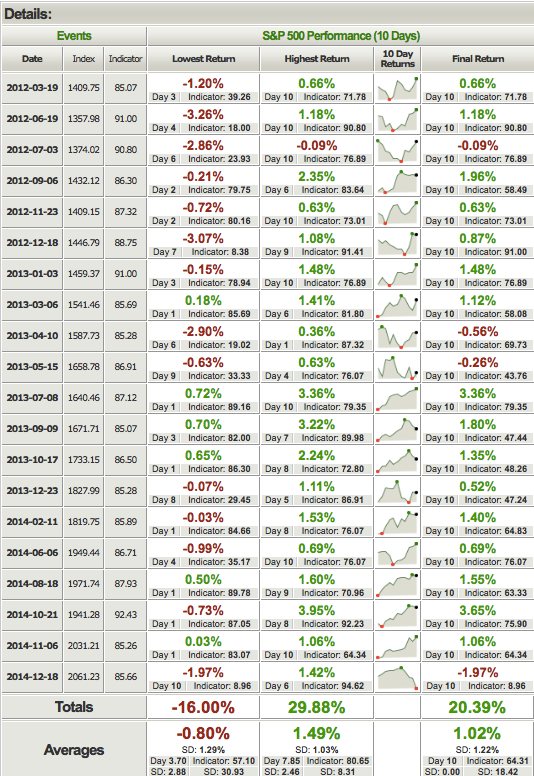
In the table above, the left column suggests at least one lower close (than Friday's closing price) has just over a 50% probability in the past two years. The first pullback, therefore, is a set up for a buy. This would match the price channel pattern discussed above.
While we expect the US market to move higher short term, our hypothesis remains that 2015 will be, at best, a year of modest gains.
More to the point, gains in the short term should probably be used to sell into, for several reasons.
First, SPX moved up more than 1% of the day of the FOMC announcement. This has happened 8 other times in the past 4 years; each time, SPX has sold off an average of 5% within the next few months. Any interim gains were more than given back.
Stock Almanac has looked at this pattern over a longer time period and similarly concluded that the stronger the gains on an FOMC day, the weaker the performance of SPX in the next 60 days (red line). That weakness begins within two weeks of the FOMC announcement.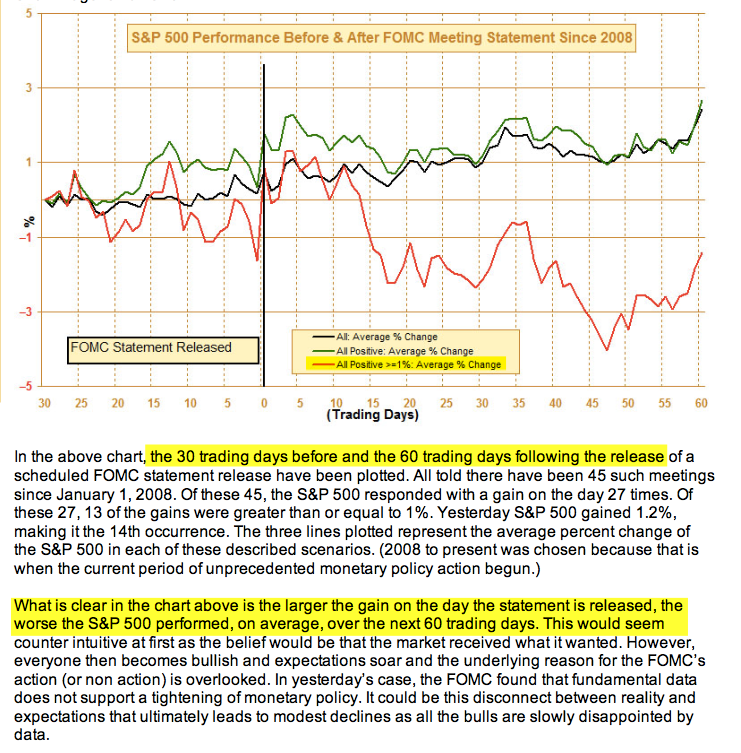
Second, while short term sentiment is mixed, longer term sentiment remains heady. This week, BAML revealed that fund managers are +58% overweight equities, the third highest since the bull market began six years ago. The only other time equity allocations have been higher in the past year was in July; equities fell later that month. Under similar circumstances in the past, long equities has had a poor risk/reward profile over the next month. Similar instances are highlighted in green (full post on this here).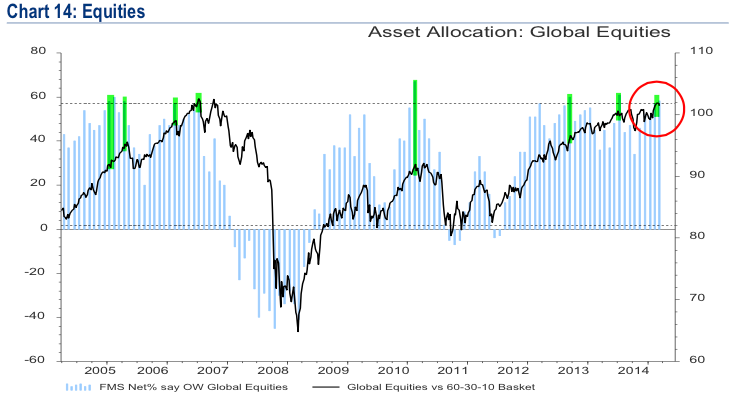
Large institutional investors are paying up for put protection. This is reflected in the Credit Suisse CSGN Fear Barometer, which hit an all-time high this past week. This is the 4th time it has spiked higher in the past year, and the SPX has sold off each time: in July and September 2014 and late February 2015 (data from Sentimentrader). 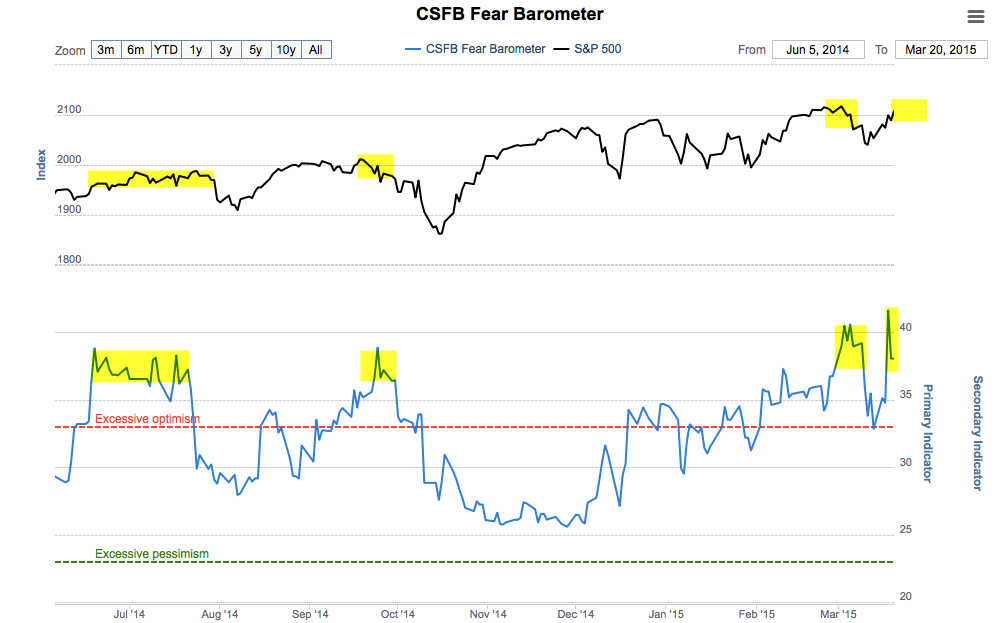
Third, equities are trading at a substantial premium to their historical averages. Shown below is median price-to-sales ratios for SPX. While the economy is growing, the rate of growth remains tepid. In prior years, equities have benefited from multiple expansion, but that seems very unlikely now. This is just not a set up for a runaway equity market; in fact, risk is to the downside (chart from Ned Davis via Meb Faber). 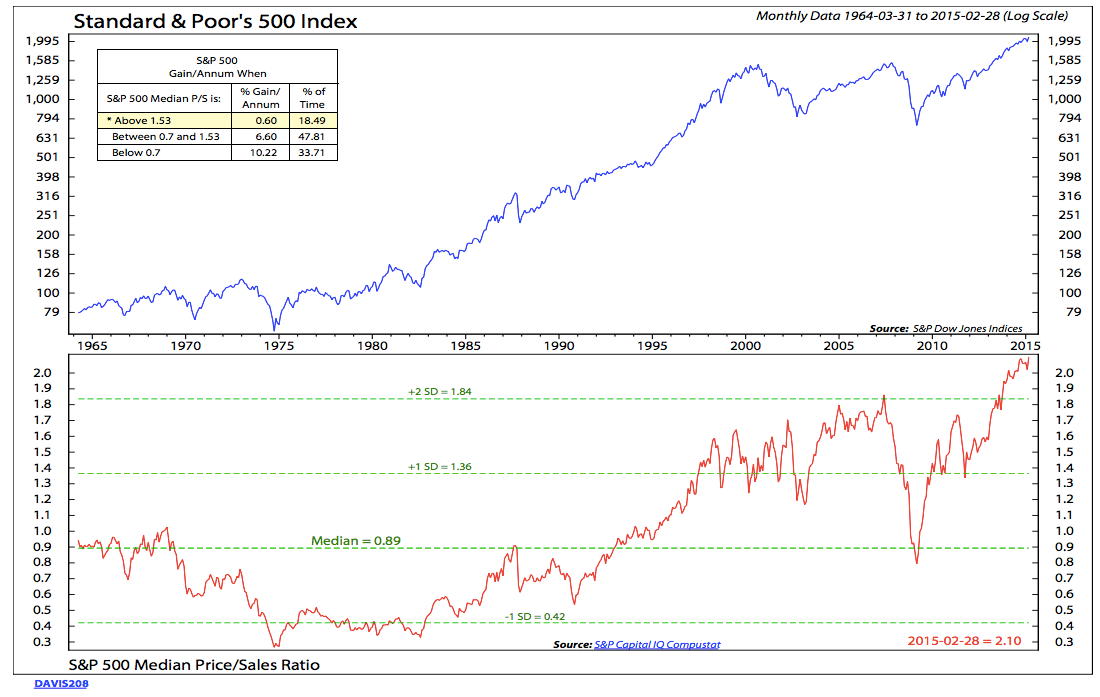
Finally, companies enter an earnings blackout period starting at the end of each quarter, during which stock buybacks are suspended (arrows). Buybacks have been an important source of demand and so the blackout has corresponded with weakness in equities sometime over the next several weeks: sometimes it is immediate, but it has also taken weeks before it has pressured equities (4Q13 and 2Q14). The net effect has been lower prices, again suggesting that any rally is likely to be short lived (chart from Yacine Kanoun; hat tip to Tsachy Mishal). 
The week after March OpX has been higher just 30% of the time (data from Stock Almanac). In the last 6 years, it has been a 50/50 coin toss. 
Our weekly summary table follows. 
